Why are winter sunsets and sunrises so amazing at the moment?
- Published
- comments
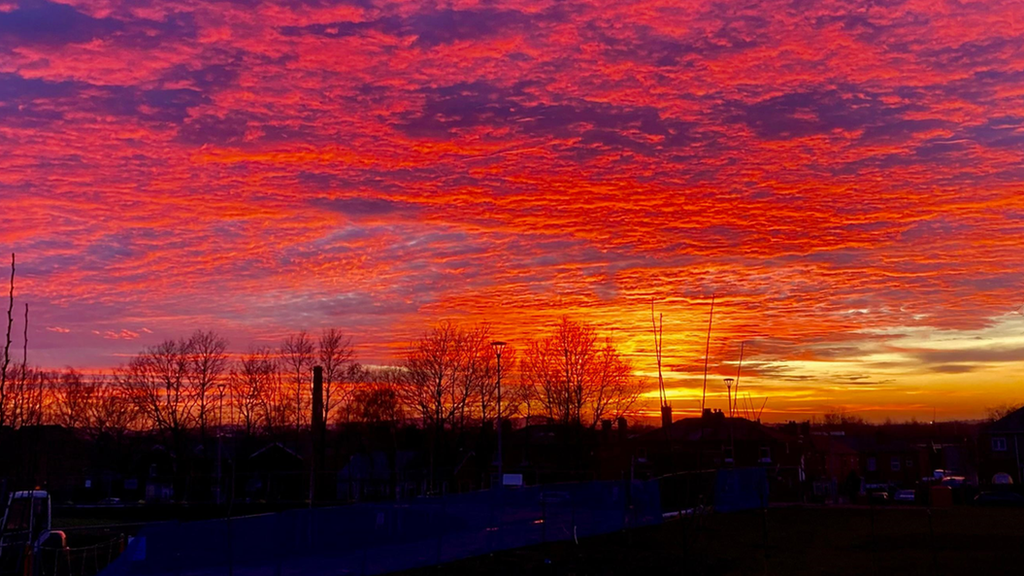
Sunset view in Chorley, Lancashire
Have you spotted the sunrise or sunset recently and been blown away by the colours? Well you're not alone.
Dusk and dawn can look particularly amazing during autumn and winter, and there are a few reasons why.
We asked weather forecaster Stav Danaos from the BBC Weather Centre what was behind this spectacle.
"It's down to many reasons," Stav told us, "but the most important ones are the angle of the sun, the amount of moisture (humidity) in the air, and the type of clouds in the sky during sunrise and sunset."
Don't ever look directly at the sun - you could seriously damage your eyes.
How does humidity affects sunsets?
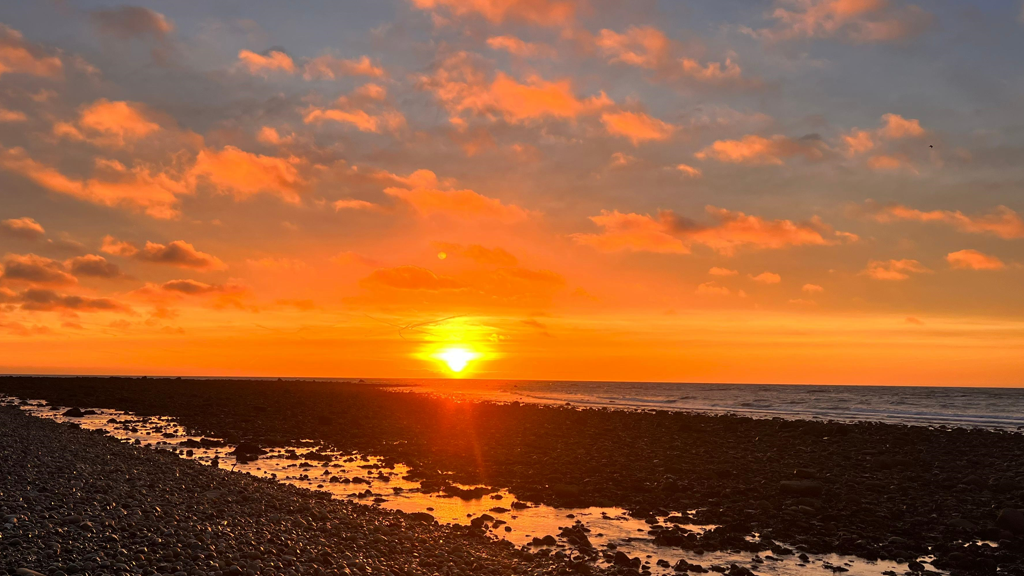
Kilkeel, Newry Mourne and Downe, Northern Ireland
Stav explained, in the winter time the air is often less humid - that means it contains less water vapour that would otherwise block the light from reaching our eye.
Clearer air makes the colours we can see appear more vivid.
In the winter the sun sets at a much more shallow angle, meaning we can see these vivid sunsets for a longer time.
How do clouds affect sunsets?
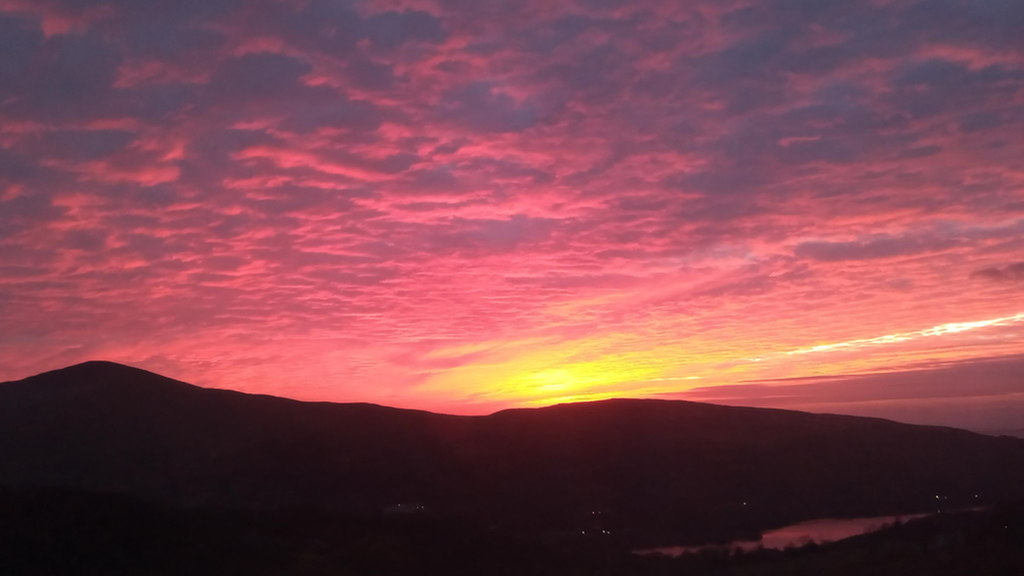
Dinorwic, Wales
The type of cloud in the sky can be an important factor in a stunning sunset scene.
Stav told us thin, high cloud makes the colours look stronger and more intense.
Lower, thick cloud... not so much.
Light from the Sun reaches Earth in just eight minutes!
Earth's star is made up almost entirely of hydrogen
It's 109 times wider than Earth!
Why does the angle of the sun affect sunsets?
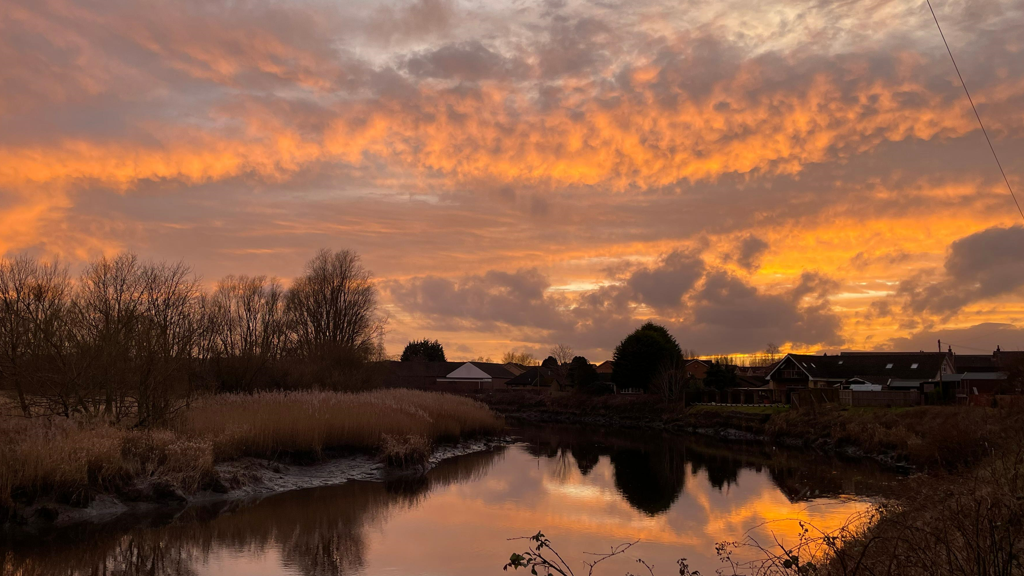
Larbert, Falkirk, Scotland
Although we can't usually see them, light is made from all the colours of the spectrum - that's why we get rainbows.
Blue light can't travel very far, so when the sun is rising or setting and is low in the sky, the light has further to travel to reach our eye and much of this blue light 'scatters' out before it reaches us.
A lot of green and yellow light is also scattered.
But red and orange light can travel further, which is why when the sun is low on the horizon, the sky appears more red and pink than usual - because those are the colours of light that reach us.
- Published15 October 2022

- Published23 October 2021
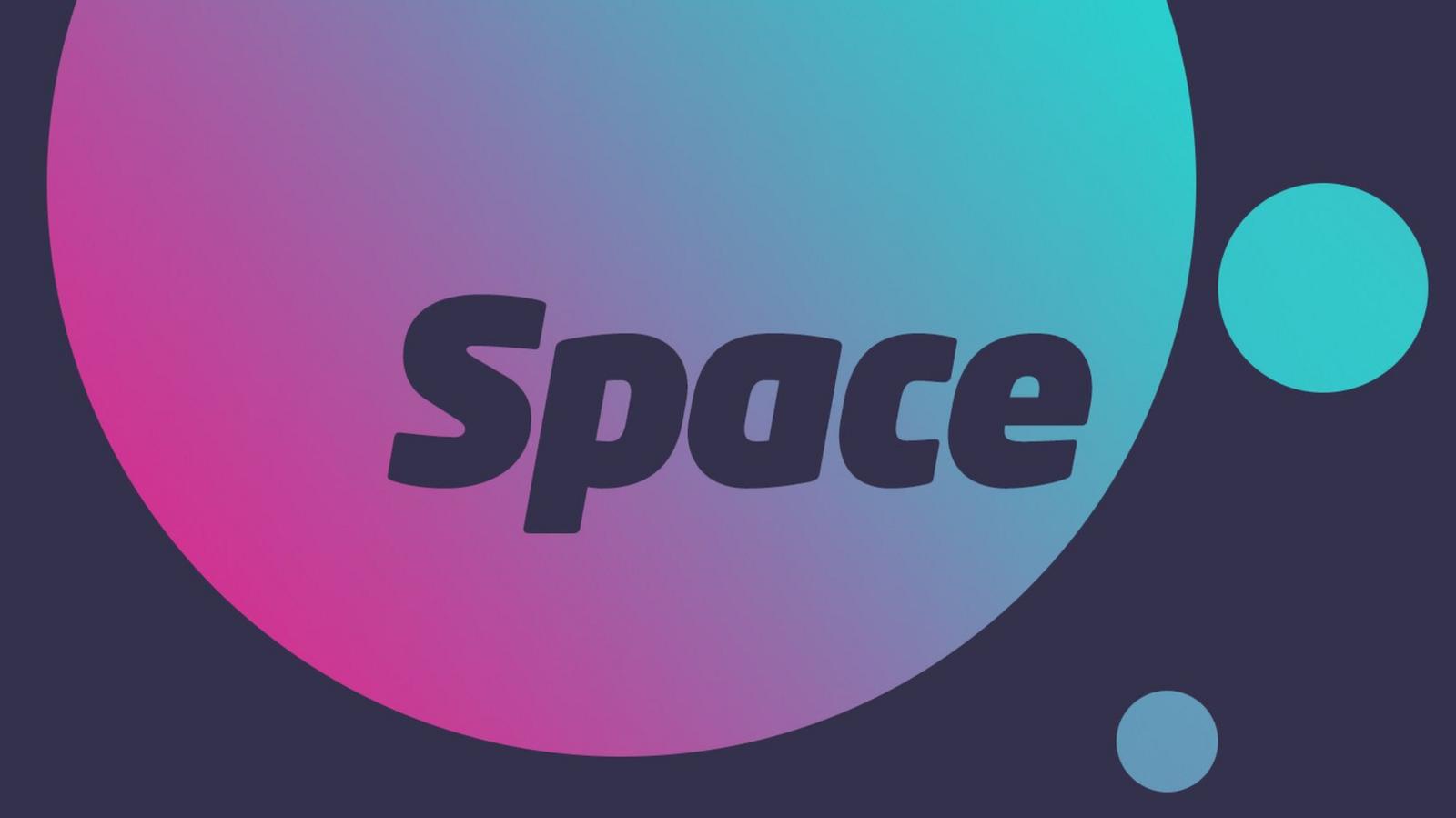
- Published3 October 2014

